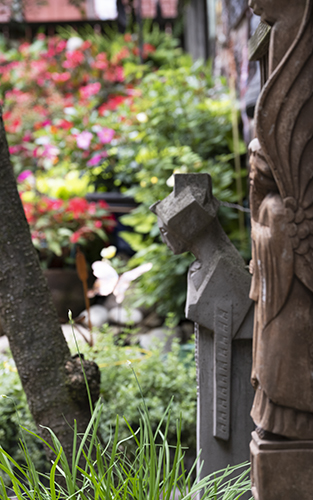sacred & profane
August 31, 2020

and trunk
One of the things I like best about photography is its ability to define reality. Looking at the above pic, it’s easy to pretend that we are looking at some lush landscape. No, ur looking at my backyard.
The green shoots in the foreground are chives, the green in the background is my gigantic oregano plant.
The sacred–profane dichotomy is an idea by French sociologist Émile Durkheim, who considered it to be the central characteristic of religion: religion is a unified system of beliefs and practices relative to sacred things, that is to say, things set apart and forbidden.
In Durkheim’s theory, the sacred represented the interests of the group, especially unity, which were embodied in sacred group symbols. The profane involved mundane individual concerns.
Durkheim explicitly stated that the sacred–profane dichotomy was not equivalent to good/evil. The sacred could be good or evil, and the profane could be either as well.
The most amazing piece of the quote is that Durkheim saw the profane as mundane, individual concerns.
In the 21st century, on the cusp of a national election, we Americans must choose between the sacred and the profane.
BTW, people who know me will not be surprised by the following confession – I rarely use the chives and oregano to cook with, but I diligently keep them free of yellow, dried-out stems and rigorously prune for the right form. (Please – the chives and oregano plants are showcase worthy. The featured image for this post – the image on the homepage that links to this post – is the oregano plant.)